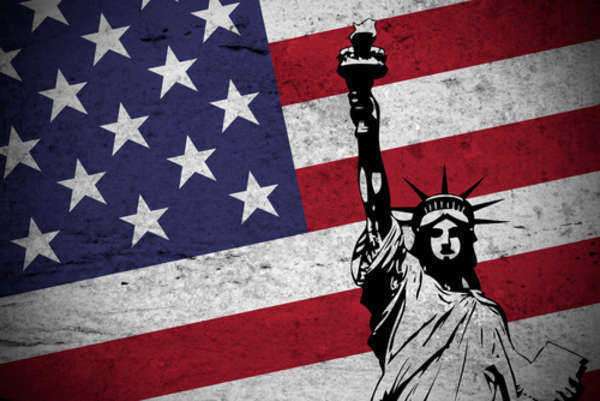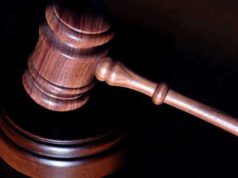Table of Contents

John Hancock: Role in the American Revolution
John Hancock was an American statesman, merchant, and patriot who played a significant role in the American Revolution. He was one of the leading figures in the struggle for American independence, and his signature on the Declaration of Independence has become iconic. Over the course of his life, Hancock put his considerable wealth and power to use in support of the revolutionary cause, solidifying his place in history as one of America’s founding fathers.
Early Life and Career
John Hancock was born on January 23, 1737, in Braintree, Massachusetts to a family of wealthy merchants. His father, the Reverend John Hancock, died when he was just seven years old, leaving him to be raised by his uncle and aunt. His uncle, Thomas Hancock, was a successful merchant, and he took young John under his wing, guiding him in the ways of business and finance.
John Hancock attended Harvard College and graduated in 1754. After college, he went to work for his uncle’s trading firm in Boston, eventually rising to become a partner in the business. He quickly became one of the wealthiest men in Massachusetts, amassing a fortune through trade with Europe, the West Indies, and Africa.
Hancock’s political career began in earnest in 1765, in the wake of the passage of the Stamp Act by the British Parliament. The Stamp Act imposed a tax on a wide range of printed materials in the American colonies, including newspapers, legal documents, and playing cards. The act was widely seen as an attack on the colonists’ right to govern themselves, and it sparked protests and riots in cities across the colonies.
Hancock was one of the most vocal opponents of the Stamp Act in Massachusetts. He wrote and published a number of essays denouncing the act and calling for resistance. He also helped to organize protests, boycotts, and demonstrations in Boston, helping to galvanize public opinion against the British government.
Throughout the late 1760s and early 1770s, Hancock continued to build his reputation as a vocal opponent of British rule. He was elected to the Massachusetts House of Representatives in 1766, and he quickly established himself as a leader of the patriot faction. In 1770, he was elected to the Boston Town Council, and he served as its president for three years.
The American Revolution
By the time the American Revolution broke out in 1775, John Hancock had become one of the most prominent and influential figures in Massachusetts politics. He was chosen as the president of the Massachusetts Provincial Congress, which was tasked with organizing the colony’s military and economic affairs in preparation for war.
In April of 1775, British troops marched on Concord, Massachusetts, in an attempt to seize weapons and supplies stored there by the patriots. The ensuing battle, known as the Battle of Lexington and Concord, marked the beginning of the American Revolution.
Hancock was a key player in the early days of the war. He used his wealth and influence to fund and equip the militia, and he helped to organize the Continental Army under the command of George Washington. He also played a crucial diplomatic role, negotiating alliances with France and other European powers that provided crucial support for the patriots.
Hancock’s most famous contribution to the cause of American independence came on July 4, 1776, when he signed the Declaration of Independence. As president of the Continental Congress, he was the first to sign the document, affixing his name in bold letters that have become synonymous with American freedom.
After the Revolution
After the war, John Hancock continued to play an active role in American politics. He was elected as the first governor of Massachusetts under the new state constitution, a position he held from 1780 to 1785. During his tenure, he worked to establish Massachusetts as a leading center of trade, commerce, and industry, helping to lay the foundations for the state’s future prosperity.
Hancock never lost his passion for American independence, and he remained a vocal advocate for democracy and freedom throughout his life. He continued to serve in public office until his death in 1793, at the age of 56.
Legacy
John Hancock’s legacy is still felt today, more than two centuries after his death. He is remembered as a champion of American liberty and independence, and his bold signature on the Declaration of Independence is a powerful symbol of the fight for freedom. He is also remembered for his philanthropy, having donated generously to causes such as education and the arts during his life.
Hancock’s name is etched into the fabric of America in other ways as well. He lent his name to the Hancock Tower, a skyscraper in Boston that is the tallest building in New England. He also appears on the front of the two-dollar bill, and his signature has become a popular icon in the world of autograph collecting.
Perhaps most importantly, John Hancock’s life and example continue to inspire generations of Americans to fight for the principles of democracy, liberty, and justice. His legacy is a reminder of the power of individual action and the importance of standing up for what one believes in, even in the face of great adversity.
Founding Father: John Hancock
John Hancock’s Early Life
John Hancock was born on January 12, 1737, to a very wealthy family in Braintree Massachusetts, which is now called Quincy. John Hancock had a very happy childhood with his mother, father, and two siblings. John Hancock often studied and played with his friend, John Adams, who later went on to become the first Vice-President and the second President of the United States.
John Hancock’s father died when he was 7 years old, and his mother was too poor to keep the family together, so John went to live with his aunt and uncle, Lydia and Thomas Hancock. John Hancock’s aunt and uncle raised him as though he was their own son.
John Hancock’s Education and Early Career
John Hancock went to Boston Latin School, where he graduated in 1750 and went on to Harvard University. While he was at Harvard, John Hancock was known for being a John Hancock very good student who was also popular with his classmates. John Hancock received his degree from Harvard in 1754.
After John Hancock graduated, he worked for his uncle at the Thomas Hancock & Company firm. He found people to do business with that made his uncle’s firm successful even during the French and Indian War. When his uncle died, John Hancock took over the real estate and shipping business. At the age of 27, John Hancock managed this company and became the richest man in Massachusetts.
Although John Hancock became powerful and rich very quickly, he still cared about his friends and his community. He often donated money to schools, churches, and the poor people in Massachusetts. His generosity made him very popular among the people in Boston. Using this attention, John Hancock used his leadership skills and soon became interested in politics.
John Hancock’s Political Career
Hancock caught people’s political attention first in the 1760s when he protested the Stamp Act and the Sugar Act, which were two tax acts passed by the British Parliament to tax the colonies. John Hancock joined the Sons of Liberty where he protested against the British.
John Hancock’s career in politics started in 1766 when he became a member of the Boston Assembly. For the next 30 years, John Hancock worked to climb the political ladder. In 1773, John Hancock eventually became President for the Congress of Massachusetts. Two years later, he became the President of the Continental Congress.
With his power, popularity, and wealth, John Hancock made a very big impact during the American Revolution. John Hancock is most famous for his very large, stylish signature on the Declaration of Independence.
Many important documents came out of the Continental Congress during the American Revolution. As the president of the Continental Congress, John Hancock got to preside over many debates among delegates.
John Hancock proved his drive and courage during the Revolutionary War. John Hancock was against the British and he was promoted to major general in the Massachusetts militia. John Hancock worked to find supplies and money for the colonial soldiers. His leadership skills helped create the United States we know today.
After the Revolutionary War, John Hancock returned to Massachusetts. In 1780, he was elected as the first governor. He was then re-elected 11 times until his death on October 3, 1793.
Fun Facts about John Hancock
•John Hancock’s signature was so big on the Declaration of Independence, that today the slang term for a signature is “your John Hancock.”
•John Hancock was the only person who signed the Declaration of Independence on July 4. Everyone else had signed it a few weeks later.






















